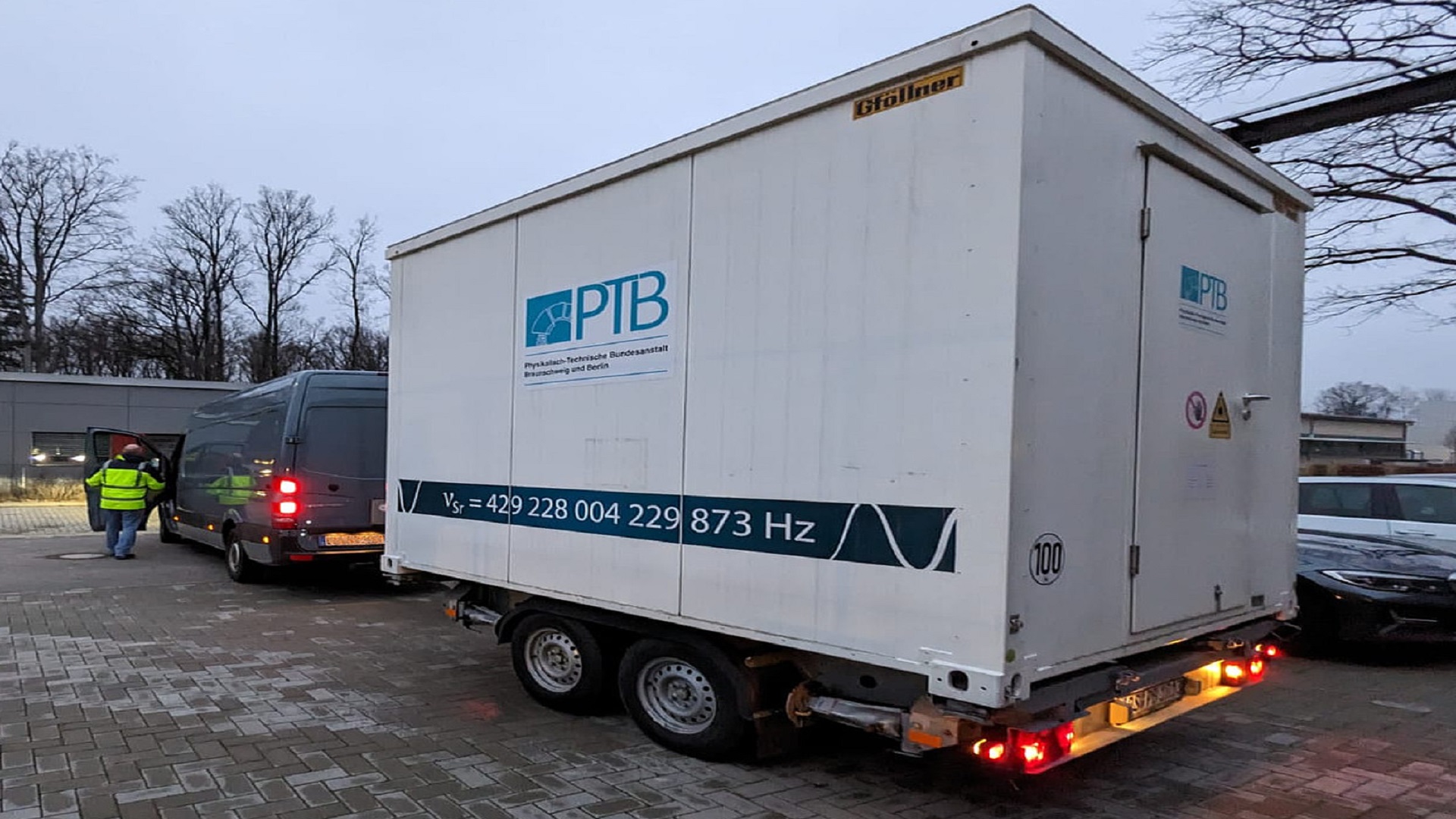Science
Germany Unveils Mobile Atomic Clock with Unmatched Precision

Scientists at the Physikalisch-Technische Bundesanstalt (PTB) in Germany have introduced a groundbreaking mobile atomic clock, which boasts an extraordinary accuracy, losing only one second over a span of 15 billion years. This optical strontium lattice clock represents a significant advancement in timekeeping technology, designed to operate outside of traditional laboratory settings while maintaining exceptional precision.
The clock relies on the stable microwave frequency emitted by the vibrations of strontium atoms. Unlike conventional atomic clocks that typically require complex laboratory setups to isolate atoms from environmental disturbances, this new device is transportable, fitting conveniently within a mobile trailer. The researchers emphasize that this advancement is a prime example of successfully applied quantum technology, as the clock has already been utilized in measurement campaigns across multiple locations in Europe.
Innovative Design and Functionality
At the heart of the mobile clock system lies a mechanism that cools strontium atoms to just a few millionths of a degree above absolute zero. This extreme cooling, even colder than the depths of outer space, is essential for maintaining the atoms’ stability. The upper section of the device features an ultrahigh-vacuum chamber that ensures these atoms remain isolated from external influences that could compromise their accuracy.
The researchers explain that the strontium atoms, when excited by laser light, emit a blue fluorescence. These atoms are then guided along a path into a cooled copper radiation shield, which protects them from any stray thermal radiation that could interfere with their oscillations. The atoms serve as the clock’s “pendulum,” oscillating at a frequency that allows for incredibly precise time measurement.
Impact on Science and Technology
The implications of this development extend beyond mere timekeeping. The precision of the transportable optical atomic clock opens new avenues for geodesy, the science of measuring Earth’s gravitational field and altitude differences through the clock’s tick rate, which is influenced by gravity and altitude. The ability to compare optical clocks with high precision is critical for both fundamental research and validating national time standards.
The PTB team has reported a relative uncertainty of just 2.1 × 10−18, making this clock one of the most accurate in existence. It achieves full precision in less than a day of operation, a remarkable feat for a mobile system. According to the researchers, if the clock were to run continuously, it would gain or lose only one second after an astonishing 15 billion years.
The portability of this atomic clock also streamlines comparisons between the world’s most accurate timekeeping devices. Traditional methods often rely on complex fiber-optic networks or satellite systems, but this new clock can be transported directly to remote laboratories or measurement sites, enhancing efficiency and flexibility in inter-comparisons.
In conclusion, the introduction of the transportable optical atomic clock not only marks a significant milestone in metrology but also paves the way for chronometric geodesy at an unprecedented level of accuracy. The research findings have been published in the journal Quantum Science and Technology, highlighting the potential impact of this innovation on various scientific and technological fields.
-

 Science2 months ago
Science2 months agoInventor Achieves Breakthrough with 2 Billion FPS Laser Video
-

 Health2 months ago
Health2 months agoCommunity Unites for 7th Annual Into the Light Walk for Mental Health
-

 Top Stories2 months ago
Top Stories2 months agoCharlie Sheen’s New Romance: ‘Glowing’ with Younger Partner
-

 Entertainment2 months ago
Entertainment2 months agoDua Lipa Aces GCSE Spanish, Sparks Super Bowl Buzz with Fans
-

 Health2 months ago
Health2 months agoCurium Group, PeptiDream, and PDRadiopharma Launch Key Cancer Trial
-

 Top Stories2 months ago
Top Stories2 months agoFormer Mozilla CMO Launches AI-Driven Cannabis Cocktail Brand Fast
-

 Entertainment2 months ago
Entertainment2 months agoMother Fights to Reunite with Children After Kidnapping in New Drama
-

 World2 months ago
World2 months agoIsrael Reopens Rafah Crossing After Hostage Remains Returned
-

 World2 months ago
World2 months agoR&B Icon D’Angelo Dies at 51, Leaving Lasting Legacy
-

 Business2 months ago
Business2 months agoTyler Technologies Set to Reveal Q3 Earnings on October 22
-

 Health2 months ago
Health2 months agoYouTube Launches New Mental Health Tools for Teen Users
-

 Entertainment2 months ago
Entertainment2 months agoRed Sox’s Bregman to Become Free Agent; Tigers Commit to Skubal









